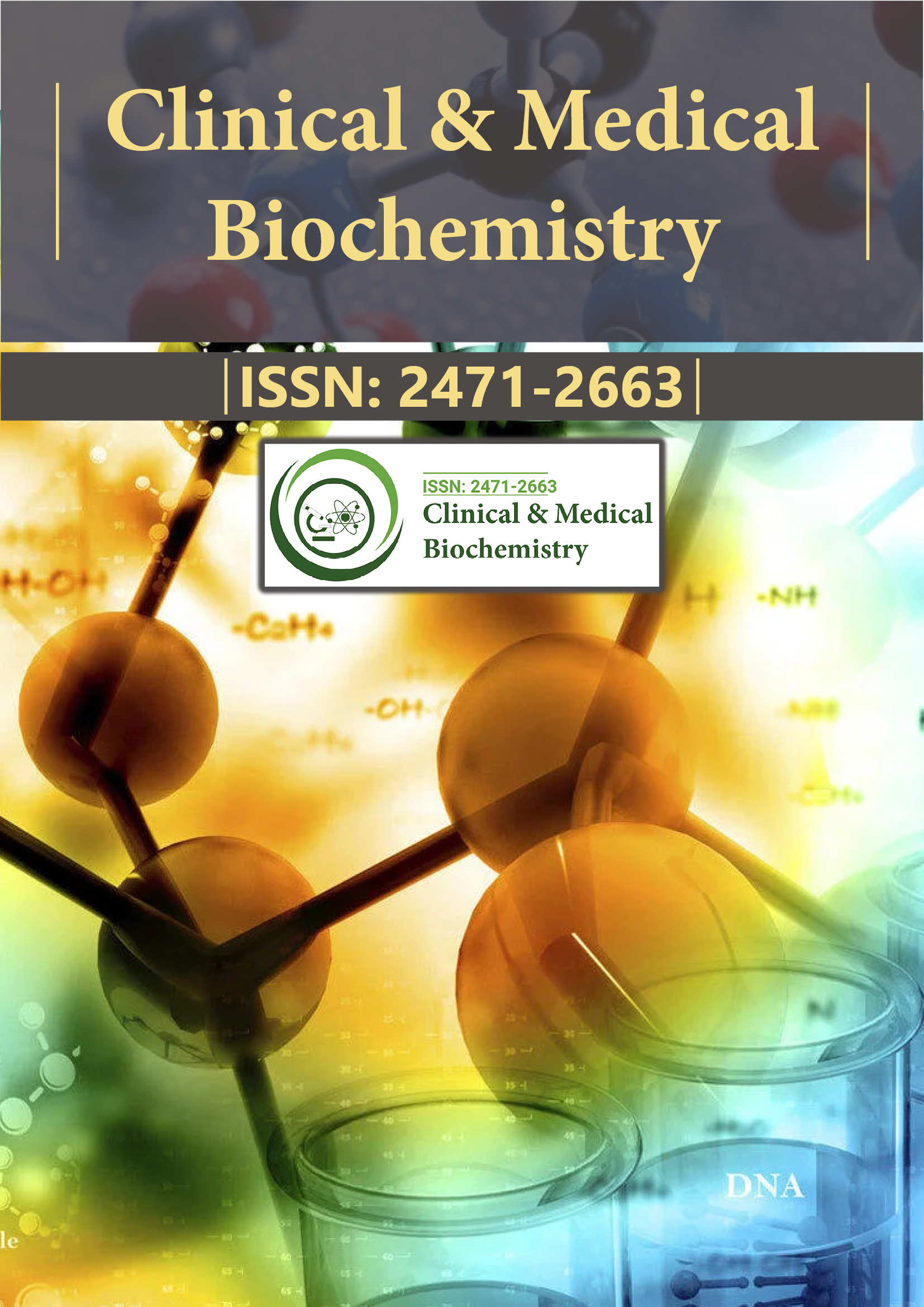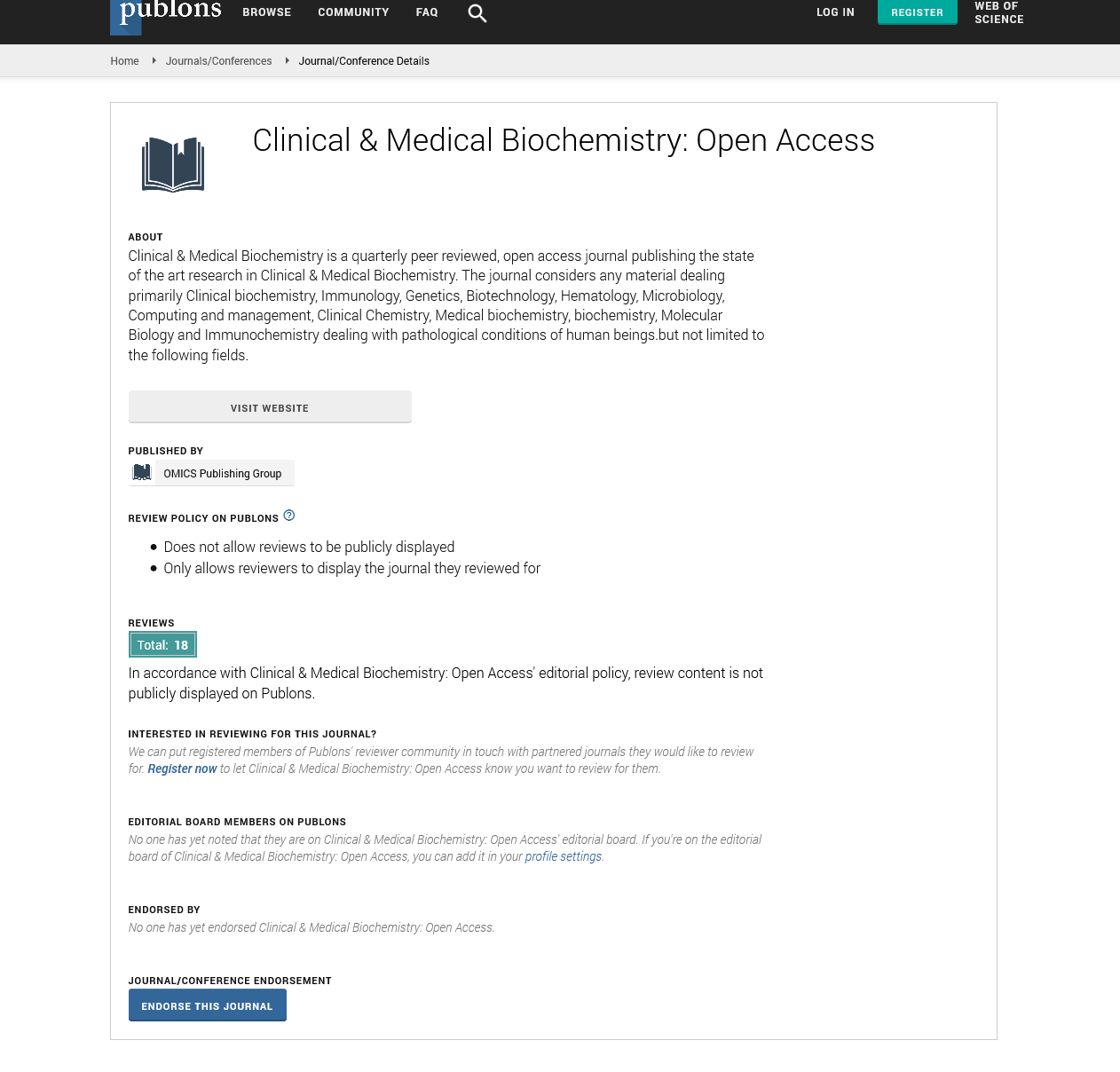Indexed In
- RefSeek
- Directory of Research Journal Indexing (DRJI)
- Hamdard University
- EBSCO A-Z
- OCLC- WorldCat
- Scholarsteer
- Publons
- Euro Pub
- Google Scholar
Useful Links
Share This Page
Journal Flyer

Open Access Journals
- Agri and Aquaculture
- Biochemistry
- Bioinformatics & Systems Biology
- Business & Management
- Chemistry
- Clinical Sciences
- Engineering
- Food & Nutrition
- General Science
- Genetics & Molecular Biology
- Immunology & Microbiology
- Medical Sciences
- Neuroscience & Psychology
- Nursing & Health Care
- Pharmaceutical Sciences
Opinion - (2023) Volume 9, Issue 2
Role of Molecular Mechanisms and Cellular Responses in Cell Signaling Pathways
Ronald Hein*Received: 03-Mar-2023, Manuscript No. CMBO-23-20911; Editor assigned: 06-Mar-2023, Pre QC No. CMBO-23-20911 (PQ); Reviewed: 20-Mar-2023, QC No. CMBO-23-20911; Revised: 27-Mar-2023, Manuscript No. CMBO-23-20911 (R); Published: 03-Apr-2023, DOI: 10.35841/2471-2663.23.9.158
Description
Cell signaling pathways are intricate communication systems that provide cells the ability to respond to different stimuli and plan their activity. In multicellular organisms, they are essential for the healthy operation of cells, tissues, and organs. The ability of cells to receive and interpret signals is essential for maintaining homeostasis, development, growth, and response to environmental cues. Cell signaling pathways are intricate molecular cascades that involve the transmission of information from the cell surface to the nucleus or other cellular compartments. They allow cells to communicate and respond to a wide range of extracellular signals, such as hormones, growth factors, neurotransmitters, cytokines, and environmental cues. These signals can originate from neighboring cells, distant cells, or even from the same cell in an autocrine or intracrine manner. Cell signaling pathways are crucial for maintaining cellular homeostasis and coordinating cellular responses to changes in the external or internal environment. They regulate a wide array of cellular processes, including cell growth, differentiation, proliferation, survival, apoptosis, metabolism, migration, and immune responses.
Dysregulation of cell signaling pathways can lead to various diseases, including cancer, metabolic disorders, neurodegenerative diseases, and autoimmune diseases. Mechanisms of Cell Signaling Pathways involve a series of molecular events that occur in a sequential and coordinated manner. These events typically consist of signal reception, signal transduction, and cellular response. Signal Reception is the first step in cell signaling pathways is the recognition of the extracellular signal by a specific receptor protein on the cell surface. Receptor proteins can be membrane-bound or located within the cell, depending on the nature of the signal. Membrane-bound receptors are typically proteins that span the cell membrane and have an extracellular ligand-binding domain and an intracellular signaling domain. Ligands, such as hormones or growth factors, bind to the extracellular domain of the receptor, leading to a conformational change that triggers intracellular signaling.
Signal Transduction:
Once the signal is received, it needs to be transduced or relayed from the cell surface to the intracellular compartments, such as the cytoplasm or the nucleus. This is achieved through a series of molecular events, including protein-protein interactions, post-translational modifications, and activation of signaling proteins or enzymes. These events propagate the signal from one molecule to another, creating a signaling cascade that amplifies and modulates the signal strength and duration.
Common signaling pathways include protein kinases, G proteincoupled receptors, and second messenger systems. Cellular Response is the final step in cell signaling pathways is the cellular response, which involves changes in gene expression, protein synthesis, enzyme activity, cytoskeletal rearrangement, or other cellular processes. The cellular response is specific to the type of signal and the context of the cell, and it can occur in a matter of seconds to hours or even days, depending on the complexity of the signaling pathway and the nature of the response. Components of Cell Signaling Pathways include various molecules and proteins that play specific roles in transmitting and modulating the signal. Some of the key components of cell signaling pathways include Receptors, Ligands, Signaling molecules, Enzymes, Adapters and scaffolds, Transcription factors. Receptors are proteins that are responsible for binding the extracellular ligands and initiating the signal transduction process. Receptors can be membrane-bound, such as G Protein-Coupled Receptors (GPCRs), Receptor Tyrosine Kinases (RTKs), or ion channels, or they can be located within the cell, such as nuclear receptors. Ligands are the molecules that bind to the receptors and initiate the signaling cascade. Ligands can be hormones, growth factors, neurotransmitters, cytokines, or other molecules that are released from neighbouring cells or generated within the cell.
Signaling molecules are proteins or small molecules that transmit the signal from the receptor to downstream signaling components. Examples of signaling molecules include G proteins, protein kinases, phosphatases, second messengers (such as cyclic AMP, calcium ions, and inositol trisphosphate), and other intracellular signaling molecules. Enzymes play crucial roles in cell signaling pathways by catalyzing various chemical reactions that modulate the signaling cascade. Examples of enzymes involved in cell signaling pathways include kinases, phosphatases, Guanosine Triphosphatases (GTPases), and many others. Adapters and scaffolds are proteins facilitate the assembly of signaling complexes and help to organize the signaling cascade. Adapters and scaffolds often contain multiple protein-protein interaction domains, which allow them to bind to multiple signaling molecules and bring them into close proximity to promote efficient signal transmission. Transcription factors are proteins that regulate gene expression by binding to specific DNA sequences and modulating the transcription of target genes.
The cellular response to extracellular signals is greatly influenced by transcription factors, which are frequently activated by signaling pathways. The proper operation of cells, tissues, and organs in multicellular animals depends on the importance of cell signaling pathways in cellular physiology. They play key roles in regulating various cellular processes, including cell growth, differentiation, proliferation, survival, apoptosis, metabolism, migration, and immune responses. The ability of cells to receive and interpret signals is essential for maintaining homeostasis, coordinating cellular activities, and responding to changes in the external or internal environment. Dysregulation of cell signaling pathways can lead to various diseases, including cancer, metabolic disorders, neurodegenerative diseases, and autoimmune diseases. Understanding the mechanisms and components of cell signaling pathways is crucial for unravelling the complex network of cellular communication and its implications in health and disease. Research in cell signaling pathways has led to the development of targeted therapies for various diseases, including cancer treatments that specifically target aberrant signaling pathways in cancer cells. Overall, cell signaling pathways are fundamental for cellular physiology and play critical roles in maintaining cellular homeostasis, coordinating cellular responses, and regulating cellular processes in multicellular organisms.
Citation: Hein R (2023) Role of Molecular Mechanisms and Cellular Responses in Cell Signaling Pathways. Clin Med Bio Chem. 9:158.
Copyright: © 2023 Hein R. This is an open-access article distributed under the terms of the Creative Commons Attribution License, which permits unrestricted use, distribution, and reproduction in any medium, provided the original author and source are credited.

